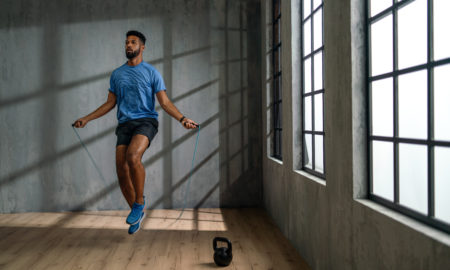To build a lot of muscle, you must train well for several years, and to do that you mustn’t be limited by injuries. Through this three-part series I’ll teach you how to self-treat most training-related injuries. I’m not referring to major injuries such as fractures and severe tendon and ligament damage but rather to common training aches and pains.
Following serious injuries I sustained in 1992, it wasn’t until 1996 that I returned to my summer 1992 standard of strength and development. Had I known in 1992 what I’d learned by 1994, I could have avoided a hugely frustrating period of my life. Not only that, but I would have been able to continue building strength and muscle in 1992 despite getting injured.
Learn from my experiences so that you never suffer the way I did.
The injuries. During a cycle where I peaked when I deadlifted 400 pounds for 20 consecutive rest/pause reps, I incurred several injuries. They combined to prevent me from training consistently for about 18 months. The most troublesome were to my right big toe from playing soccer, my right shoulder from bench pressing without a spotter and getting stuck, my lower back from letting my mind push my body beyond what it was capable of tolerating on deadlifting and bent-over rowing, and my knees—the last straw after a few workouts of squatting with my heels raised on a block of wood.
The toe injury made even slow jogging an impossibility, and I could walk only short distances without pain. The knee problems were so severe that I was unable to do a single freehand squat without suffering soreness for a few days afterward. I wouldn’t have been able to run to save my life. I couldn’t lift even very light boxes without having to be meticulously careful about a flat back and not bending over much. I couldn’t go up a staircase two steps at a time, and I could only gingerly enter and exit a car.
What used to work. Until I got the injuries in the summer of 1992, my standard treatment for injuries always worked: Lay off the bothersome exercise(s) for a week or so, perhaps apply some ice over the first few days, skip some workouts if need be, ease back into training over a couple of weeks. Then all would apparently be well.
The root of the injuries. Nearly 20 years of taking too many liberties in the gym, following advice from poor sources and not always practicing what I preached finally piled up. I started to crumble.
In July 1992 I was forced to give up hard training. I was riddled with injuries. Chiropractic helped my lower-back problem, but only a little. The discomfort and pain there, and the aching and tingling of the sciatica in my left leg, were relentless. Chiropractic care is, however, very helpful for many back problems.
15 months later. Over the next 15 months I had several false training starts. Each time my shoulder, lower back, sciatica and knees forced me to stop. I started to think my training days were behind me, and retirement at age 34 was in order.
The magic of trigger-point therapy. In October 1993 I started to investigate trigger-point therapy, which is also called, among other names, acupressure, myotherapy and shiatsu—although the precise techniques of each practice aren’t necessarily the same.
I bought the book Myotherapy—Bonnie Prudden’s Complete Guide to Pain-Free Living, along with a wooden hand tool called a bodo (turned out I could have used a golf ball instead). Prudden’s isn’t the only book on trigger-point therapy; it just happened to be the first one I discovered.
I read enough in a couple of hours to give me the gist of what trigger point therapy is about. I found it hard to believe that something so cheap, noninvasive, nondependent on nutritional supplements and not necessarily requiring a professional practitioner could be so helpful.
Not only did I not know anything about how to deactivate spasm-causing trigger points until that time, but I also didn’t even know that trigger points—highly irritable, very tender spots in muscles—existed. Despite being so wounded with injuries for well over a year, I didn’t realize that I had such chronic muscle spasms. Once I knew how to find trigger points, I discovered I was loaded with them.
In the first week of November 1993 I started to use trigger-point therapy daily on most of my troublesome areas.
Improvement in my right toe was almost immediate—in the first few days. By then it was close to two years since I’d injured it, and I fixed it with a few applications of a single trigger-point exercise that I held for about 10 seconds at a time. There was substantial shoulder and knee improvement after a few weeks. It was a terrific start to self-administered trigger-point therapy, although much improvement was still needed.
In the remaining installments of this discussion, I’ll describe how you can perform trigger-point therapy yourself. Be prepared for the discovery that at least some areas of your body are loaded with triggers that cause you discomfort or pain.
—Stuart McRobert
www.Hardgainer.com
Editor’s note: Stuart McRobert’s first byline in IRON MAN appeared in 1981. He’s the author of the new 638-page opus on bodybuilding Build Muscle, Lose Fat, Look Great, available from Home Gym Warehouse, (800) 447-0008, or www.Home-Gym.com.




















You must be logged in to post a comment Login